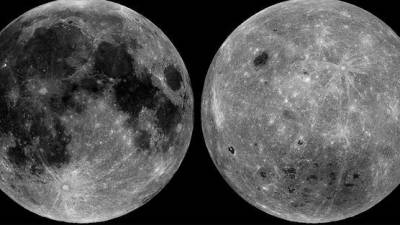WASHINGTON: Rock samples from the moon’s far side reveal its interior is significantly cooler than the side facing Earth.
China’s Chang’e-6 spacecraft successfully retrieved these unique samples last year.
The collected material formed deep within the lunar mantle billions of years ago.
Scientists analysed minerals from the Chang’e-6 landing site in the South Pole-Aitken Basin.
They determined this farside rock crystallised from lava about 2.8 billion years ago.
This formation occurred approximately 60 miles beneath the lunar surface.
The crystallisation temperature measured about 1,100 degrees Celsius.
Researchers compared this data with 33 previously studied nearside samples.
The farside sample formed at a temperature roughly 100 degrees Celsius cooler.
This thermal asymmetry between the two sides likely persists today.
Geoscientist Yang Li stated these results demonstrate a mantle temperature difference.
He emphasised this finding helps explain the moon’s dramatic surface dichotomy.
The farside features a thicker crust and more mountainous, cratered terrain.
It also shows evidence of less past volcanic activity than the nearside.
Consequently, the farside has fewer dark basalt plains formed from ancient lava.
The nearside appears smoother and is largely covered by these volcanic plains.
The moon formed around 4.5 billion years ago alongside Earth.
Lunar volcanism involves molten rock erupting from the mantle onto the surface.
Chang’e-6 collected its samples using a scoop and drill in June 2024.
The spacecraft later returned this material to Earth, landing in Inner Mongolia.
Earth’s gravitational pull keeps the moon tidally locked, always showing one face.
Researchers propose the farside’s cooler interior stems from its composition.
It may contain smaller amounts of heat-producing radioactive elements.
Elements like uranium, thorium, and potassium generate heat through radioactive decay.
An ancient asteroid impact on the farside might explain this uneven distribution.
Such a collision could have shifted denser, hotter material toward the nearside.
Another hypothesis suggests the moon merged with a smaller companion moon.
Internal differences might reflect thermal variations between these two moonlets.
Understanding this lunar dichotomy is crucial for reconstructing its formation history.
This knowledge also informs studies of other planets’ origins and evolution. – Reuters
